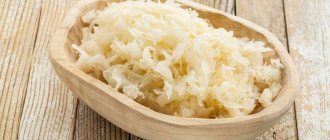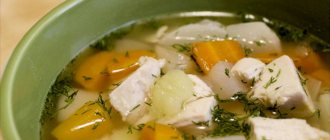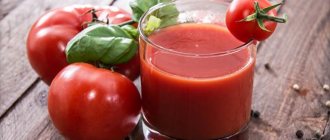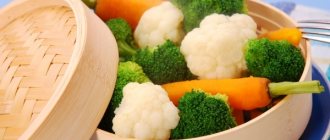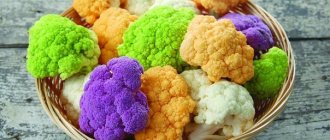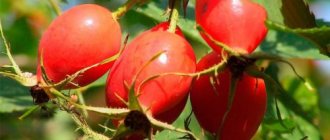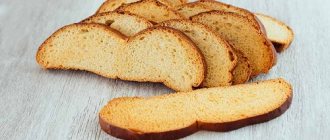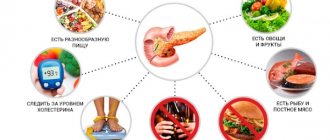People who are forced to go on a diet due to inflammation of the pancreas know well that any deviation from dietary nutrition threatens an acute exacerbation. Most foods are strictly contraindicated during the period of acute pancreatitis; during the period of remission, you can make a slight relaxation in the diet. One of the most popular products in Russian cuisine is cabbage. In addition to the familiar white cabbage, cauliflower and broccoli have recently become popular.
When a diagnosis is made, the patient begins to ask the attending physician about the peculiarities of dietary nutrition and, in particular, is it possible to eat stewed cabbage with pancreatitis? Before answering this question, it is necessary to understand the difference between chronic and acute pancreatitis.
Stewed cabbage for acute forms of the disease
During the acute form of the disease, the pancreas requires drug treatment and a strict diet. In the first three days, the patient is on a fasting diet, then foods with a reduced fat and fiber content are introduced. It is for this reason that white cabbage is not recommended for use during exacerbations. Even with the naked eye you can see the fibers running throughout the vegetable.
Other varieties of cabbage - Chinese cabbage, cauliflower, broccoli - have lower fiber content and can be introduced into the patient’s diet around the fifth day. It is better not to eat them raw; it is necessary to cook the vegetables. The white cabbage variety of the product is allowed after the first week of the diet only in stewed form, preferably with the addition of zucchini. Doctors do not allow cabbage to be consumed fresh or sauerkraut, even during remission.
Harm
The dish contains a large amount of organic acids, so in some diseases it can be harmful. Sauerkraut is contraindicated for diseases of the pancreas and thyroid gland, arterial hypertension, renal failure, and cholelithiasis. People with gastritis and peptic ulcers should use this dish with great caution.
In any case, it is better to rinse it from brine before use. In general, it is better to use salt-free recipes for fermenting cabbage. People suffering from pancreatitis should not forget about the following dangerous properties of this product:
- high content of coarse fiber. Dietary fiber irritates the mucous membrane of the gastrointestinal tract, increases peristalsis and can cause increased gas formation. This is fraught with the occurrence of cramping pain in the abdomen and a feeling of fullness. That is why, even at the stage of stable remission of pancreatitis, it is better to limit the consumption of sauerkraut. Remember, fiber is the main enemy of health in pancreatitis;
- sauerkraut is a fairly salty dish. As you know, table salt attracts water, and this negatively affects the condition of the inflamed organ. Excess salt causes swelling of the pancreas and increases pain;
- organic acids, which give the dish a sour taste, irritate the gastrointestinal tract and increase the secretion of the stomach and pancreas.
Summarizing all of the above, we can say that sauerkraut is not a product that is safe for patients with pancreatitis. During periods of exacerbation, this dish should be completely avoided. During stable remission and subject to satisfactory tolerance, careful introduction of pickled vegetables into your diet is allowed.
Is it possible to eat cabbage with chronic pancreatitis?
People live with a diagnosis of chronic pancreatitis all their lives. To avoid sudden exacerbations, the patient should not deviate from the existing diet. Meals should be frequent and consist of small portions. All fried, smoked and salted foods are completely excluded; steaming or stewing of foods is allowed. You can diversify your diet table with stewed cabbage. During stewing, the vegetable loses most of its fiber and essential oils, which can irritate the mucous membrane of the gland. After heat treatment, the product does not lose its beneficial vitamins and minerals. You should not completely give up the vegetable - it is too beneficial for the body.
Before eating stewed cabbage, you can try adding it a little to the first dishes. If vomiting or diarrhea does not occur, you can try stewed vegetables, but you should not eat too large portions in the first days.
Vegetables
Let's consider what vegetables are allowed to eat during acute pancreatitis and exacerbation of a chronic disease.
Tomatoes
Doctors do not have a consensus on whether tomatoes are beneficial or harmful for pancreatitis. The positive side of this vegetable is that it contains delicate fiber, which helps improve digestion. They help reduce cholesterol levels in the patient’s blood and reduce the load on the pancreas.
But what foods should you not eat when you are sick? The opinion that tomatoes are harmful for pancreatitis is supported by the fact that the substances they contain contain toxins. We can definitely say that it is forbidden to eat unripe tomatoes, as they contain a large amount of harmful substances. A patient who has eaten such a vegetable significantly increases the load on the organs of the digestive system, including the pancreas.
Allowed products for pancreatitis
Fresh tomato juice, which was prepared from ripe fruits, has only a positive effect on the diseased organ. It is important that this is not the drink that is sold in bags; it is advisable to make it yourself.
It stimulates the pancreas. To increase its effectiveness, you can add fresh carrot juice to it. You can also eat stewed or baked tomatoes for pancreatitis. You just have to observe moderation when consuming these vegetables - overconsumption of even ripe vegetables will not have a positive effect on the functioning of the digestive tract.
Tomato juice has a choleretic effect. This means that it increases the secretion of bile. Therefore, if it is consumed in the acute phase of the disease, the condition may worsen. In this case, there is a possibility of developing secondary reactive pancreatitis, which often occurs with gallstone disease.
This is due to the fact that a small amount of bile will enter the common pancreatic duct, bind to pancreatic enzymes and provoke digestion processes. Normally, they occur in the intestinal cavity, but if they occur in the bile ducts, inflammation and damage to the pancreas develop.
Therefore, we can definitely say that eating tomatoes for pancreatitis is allowed. But you should not eat them or drink tomato juice during an exacerbation of the pathology.
To make sure that this vegetable does not cause a worsening of the condition, it is recommended to undergo several diagnostic procedures:
- Ultrasound of the pancreas - there should be no swelling;
- analysis for amylase, diastase and elastase - the indicators should be within normal limits.
Only after the doctor is sure that the inflammation has subsided can you eat tomatoes.
cucumbers
The fruits of this vegetable crop consist almost entirely of water. Despite this, they contain a large amount of vitamins and minerals. A diet for pancreatitis may contain these vegetables. In some cases, it is recommended to consume up to seven kilograms of cucumbers per week.
This helps relieve the diseased gland and reduce inflammatory changes in its tissues. It is only worth noting that excessive consumption of any product is unsafe. Therefore, before starting any diet, you should consult your doctor.
The negative side of cucumbers is that they may contain nitrates and other substances that are used in growing vegetables. Therefore, eating a large amount of vegetables can even be dangerous for the patient’s health.
Cabbage
The list of foods allowed for pancreatitis and gastritis also includes cabbage. It is recommended to consume any type of this vegetable, but only boiled or stewed. White cabbage does not contain harmful substances, but it contains a large amount of coarse fiber. Therefore, in unprocessed form, it can significantly burden the patient’s digestive system.
For pancreatitis, nutritionists recommend eating vegetables
As for fried vegetables, they are contraindicated for patients with pancreatitis. The same applies to sauerkraut - it contains acid, which has an irritating effect on the digestive system. You can eat Chinese cabbage in its raw form, but if the disease worsens, it is better to avoid it.
Sea kale
Nutritionists and gastroenterologists allow the use of this product for inflammatory diseases of the pancreas. Sea kale contains a large amount of useful substances - nickel, cobalt, iodine. They help improve the general condition of the patient with pancreatitis.
As with other products, this plant should not be used in acute forms of the disease or exacerbation of chronic ones. It is also forbidden to eat seaweed in large quantities, as this can increase the load on the diseased organ. It requires a large amount of pancreatic enzymes to digest it.
Pumpkin
If the disease worsens, pumpkin can only be eaten boiled or stewed. In this case, it is better to grind the food and eat it in the form of puree. At this time, it is allowed to eat no more than 300 grams of this product per day.
During remission, you can eat dishes with stewed and baked pumpkin, as well as soups and casseroles. Millet porridge, to which pieces of boiled pumpkin are added, is also useful. You should use the juice, oil and seeds of this vegetable with caution, as if consumed excessively, they can increase the severity of inflammatory changes in the tissues of the pancreas.
Stewed cabbage recipes
Cabbage for pancreatitis can be consumed in different varieties, each of which has a special taste and invaluable benefits. When preparing dishes, you need to remember that there should be no frying of the product before stewing; oil is added in the smallest quantity. To avoid a heavy load on the gland, it is recommended to add other vegetables with a softer structure to white cabbage. It is better to choose a young vegetable, without rotten leaves. The leaves are cut into thin strips so that the digestive system quickly digests the incoming food.
Proper nutrition
The doctor offers a sample menu for pancreatitis to the patient when he prescribes diet number 5p. You can read more about it here. A healthy diet for pancreatitis should include the following foods:
- vegetables – consumed in the form of puree. The patient is given cucumbers, tomatoes (including tomato juice), potatoes, carrots, broccoli, green peas and other foods that do not have a damaging effect on the pancreas. Vegetable casseroles and soups without adding meat are useful for treatment. As for white cabbage, it is given only in stewed form;
- fruits – shows all the fruits that were discussed earlier in this article. During an exacerbation, it is also better to give them to the patient in the form of a puree;
- meat - only lean types of this product are allowed, for example, veal, chicken, rabbit, turkey meat. They can be given to patients only in boiled form - soup with meatballs, steamed cutlets, soufflé, etc.;
- chicken eggs - no more than two eggs per week are allowed. At the same time, they must be cooked soft-boiled;
- porridge - these dishes form the basis of diet therapy for pancreatitis. The use of oatmeal, semolina, buckwheat or rice porridge is recommended. They are the easiest to digest and do not exacerbate the disease;
- bread - only white. Black is not on the list of permitted products, as it enhances the secretion of pancreatic enzymes and increases the load on the gland.
Diet therapy is the main component of the treatment of pancreatic inflammation. Knowing what foods you can eat during pancreatitis and what you cannot eat, together with the use of medications, you can achieve stable remission. You should carefully follow the doctor’s recommendations, since if the regimen is violated, the disease may re-develop.
Traditional recipe for stewed cabbage.
- Fresh vegetables must be washed under running water.
- It is better to remove the top leaves, they are the toughest.
- Next, the head of cabbage is cut into quarters and finely chopped.
- The hard core is not edible and is discarded.
- The finely chopped product is placed in a pan, carrots grated on a coarse grater and finely chopped onions are added there.
- Do not forget that during heat treatment the vegetable shrinks and releases juice.
- Next, add a little water and sunflower oil to the pan.
- To prevent the dish from burning, it must be stirred periodically. Half an hour before the end of cooking, tomato paste is added to the vegetables.
- In order not to go beyond the dietary limits, add just a little pasta.
Stewed cabbage goes well with meat or other vegetables. To make the dish more satisfying, you can add lean meats - chicken breast, turkey, veal. The vegetable also goes well with zucchini or pumpkin.
Stewed cauliflower
Cauliflower takes less time to prepare, but its taste is not inferior to white cabbage varieties.
- First, the head of cabbage must be disassembled into inflorescences.
- Next, place the pieces of cauliflower in boiling salted water for five minutes.
- The boiled inflorescences are laid out in a frying pan, and grated carrots are added to them.
- You don’t have to add onions, it all depends on a person’s taste preferences.
- Add a little water and sunflower oil to the saucepan and then cover with a lid.
- The dish should be stewed, not fried, so the fire should be as low as possible.
For pancreatitis, cauliflower is great for daily nutrition. It comes in fresh and frozen form, it all depends on the time of year. This vegetable cooks very quickly, and all the beneficial minerals and vitamins simply do not have time to leave the product. In its composition and method of preparation, cauliflower is in many ways similar to broccoli. Even in taste, these varieties are not much different from each other.
Prohibited Products
Now let's look at prohibited foods for pancreatitis. Even in the chronic form of the disease, they can significantly worsen the patient’s condition.
Alcohol
Alcoholic drinks in any quantity have a damaging effect on the pancreas. Even compared to the liver, this organ is the most sensitive to the action of ethyl alcohol. This is due to the fact that the gland does not produce enzymes that break down alcohol. Therefore, almost half of the cases of acute pancreatitis develop in patients after drinking alcohol, even in cases where they have not previously abused alcohol.
If remission of the disease has been achieved, inflammation of the pancreas may occur again after drinking. This leads not only to functional disruption of the organ, but also to damage to its cells. Gradually, foci of connective tissue form in their place. As you know, the pancreas does not recover, so you should not drink alcohol in any form of pancreatitis.
Fatty dishes
When consuming foods that contain large amounts of fat, the load on the pancreas increases significantly. You can’t eat if you have pancreatitis:
- fatty meat - pork, goose or duck. It is especially forbidden to eat meat dishes prepared by frying or over a fire, for example, kebab, cutlets. You should also not eat dumplings, canned meat and stew;
- fatty fish in any form. This includes salmon, trout, catfish, sprat, herring, mackerel, etc.;
- broths - gastroenterologists prohibit patients with pancreatitis from eating rich bone broths, as well as jellied dishes.
The restriction on the intake of fatty foods applies not only to products of animal origin, but also to plant ones. You should also not use various sauces, such as mayonnaise.
Allowed and prohibited foods for pancreatitis
Products with chemical additives
Various substances that are added to food to improve taste or increase shelf life also negatively affect the health of the pancreas. Currently, the number of such products is growing steadily, as a result of which there is also an increase in the incidence of pancreatitis.
All patients should avoid the following foods: sausages, yoghurts, processed foods, etc. It is better to replace them with healthier vegetables or fruits.
Dairy
Milk and products made from it contain large amounts of animal fat. Therefore, the list of prohibited products for pancreatitis also includes:
- glazed cheese curds;
- cottage cheese;
- cheeses – primarily smoked;
- ice cream.
During the chronic stage of the disease, it is allowed to consume low-fat types of dairy products, for example, kefir or low-fat milk.
